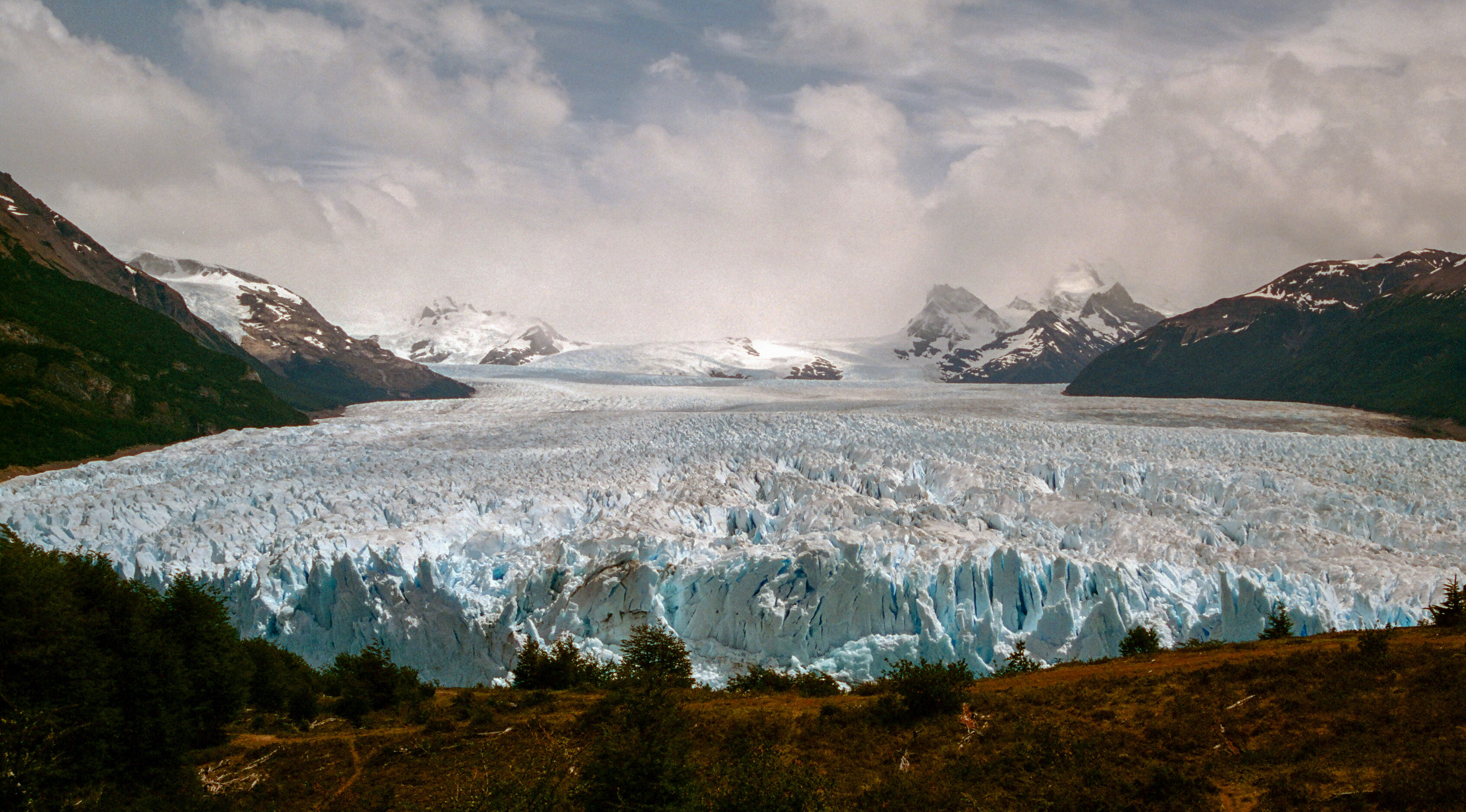
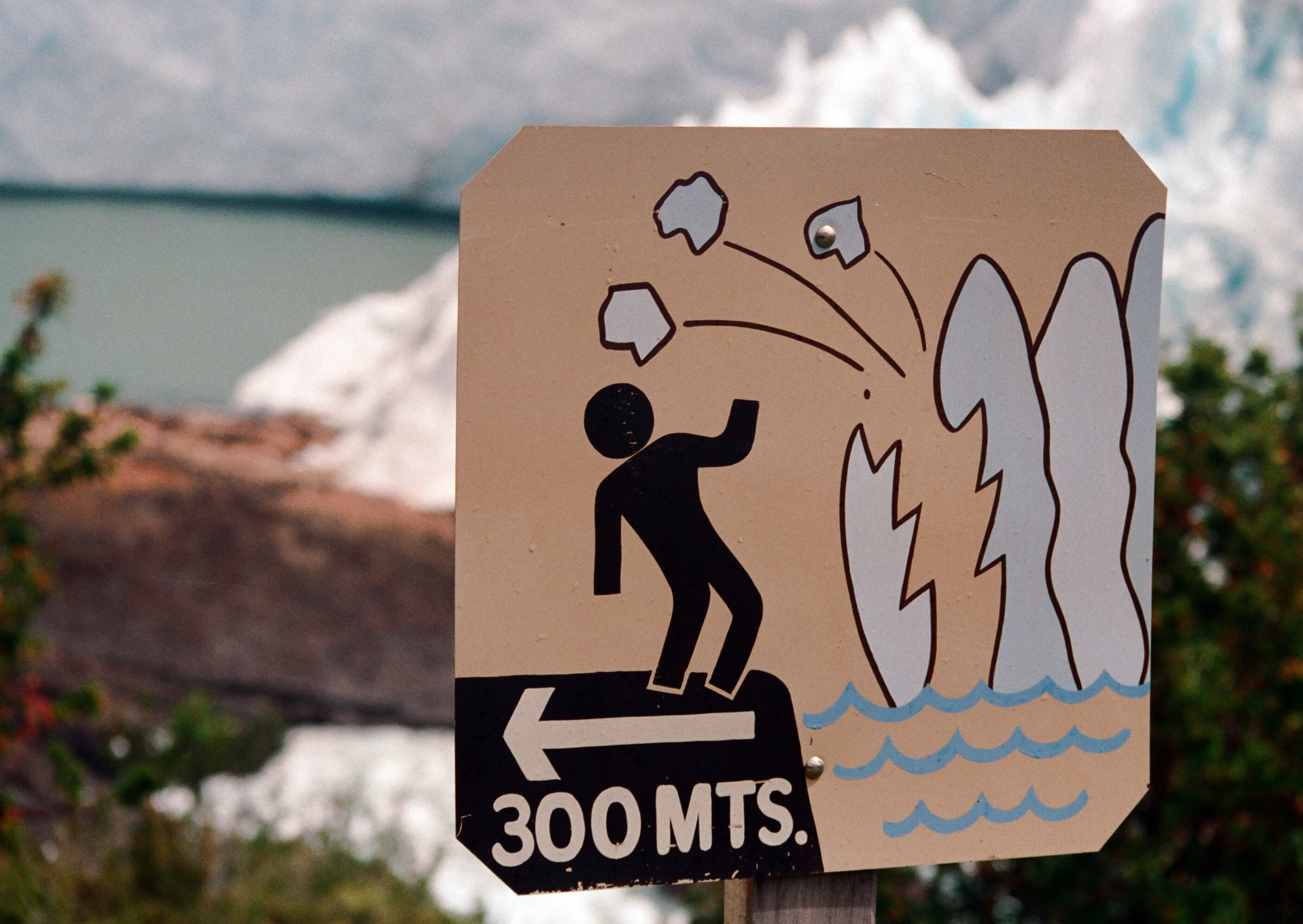
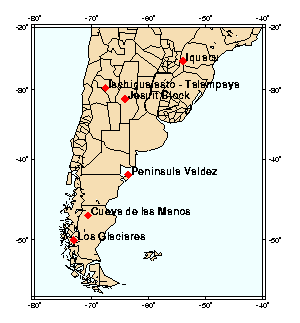
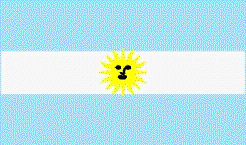


We visited the Moreno Glacier in Parque Nacional Los Glaciares in 1993. The glacier is too spectacular for words. It is both a visual and an auditory experience. Visually, it's exactly what you think a glacier should be. A huge wall of ice extending up into the mists that hang over a long valley. The front is 4 km long, and it is probably about 150 ft high. You can approach it two ways. Un launcho (not to be confused with lunch) takes you out on Lago Argentino up to about 300 m from the front of the glacier. It looms large over you, and icebergs float past. The front face is incredibly craggy and broken and twisted, and also a deep blue color. The second approach is from a bluff toward which the glacier is advancing. The park service has installed several walkways in this area which afford spectacular views of different sections. Prior to the installation of the walkways it was possible to climb down to the base of the bluff, which was very close to the face of the glacier. Unfortunately, several tourists had been killed over the years by falling ice and the waves they generate.
The surprising aspect of the glacier is that it actually does something before your eyes. It's moving at about 30 cm/day, which may not sound like all that much. (Your typical garden snail would not need to sprint to get out of the way). BUT ... watch for ten minutes and you hear a loud thunderclap and a car-sized block of ice drops off into Lago Argentino. Watch for an hour and a house-sized block falls off, forming an iceberg that will drift downstream for many miles before melting. Very few of the World Natural Heritage Sites "do" anything. They simply "are". The Moreno glacier is a rare and spectacular exception.
Links with more information:
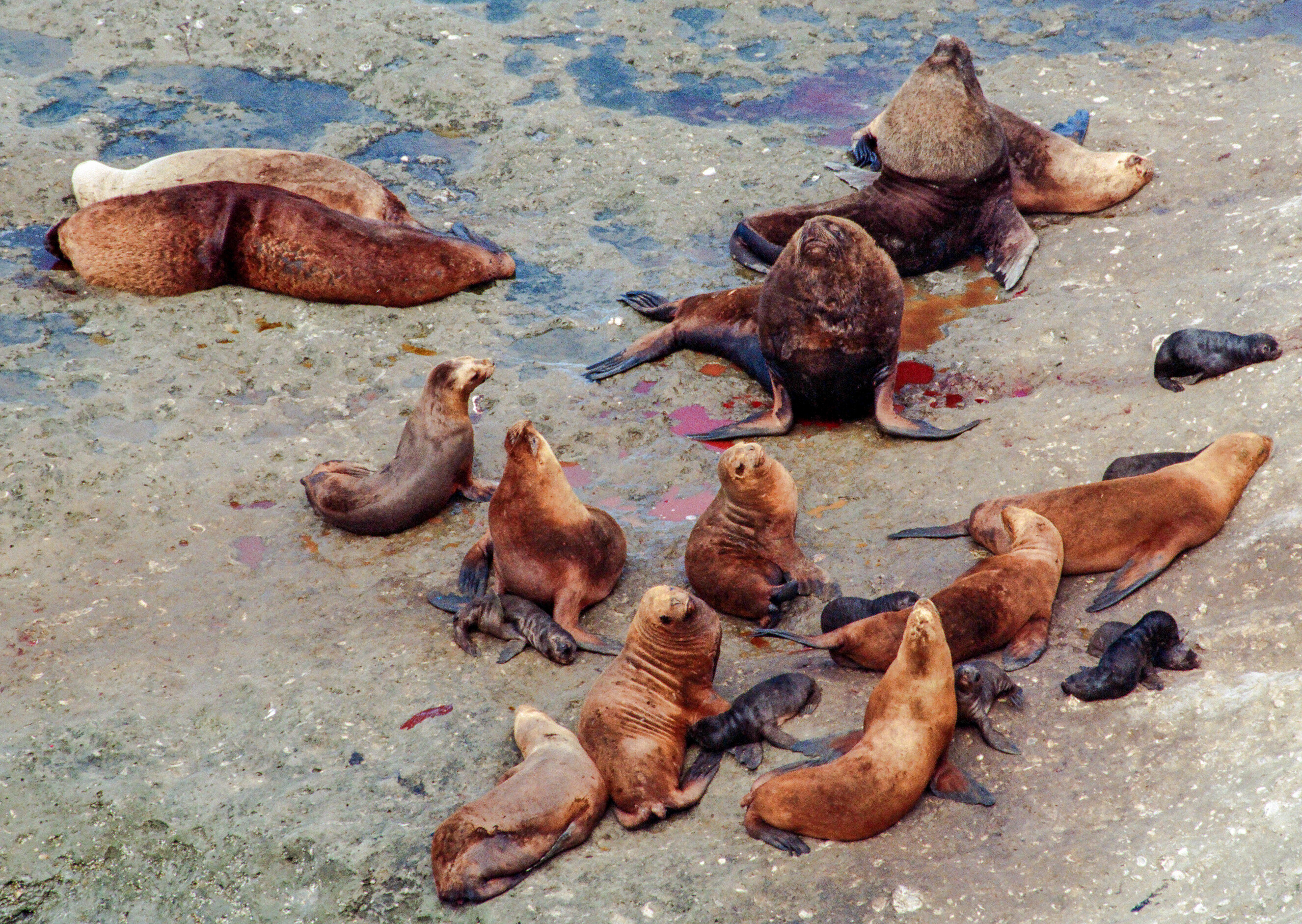 (42.5 S 64 W) --
satellite image
(42.5 S 64 W) --
satellite image
Peninsula Valdes is a site of global significance for the conservation of marine mammals. It is home to an important breeding population of the endangered southern right whale as well as important breeding populations of southern elephant seals and southern sea lions.
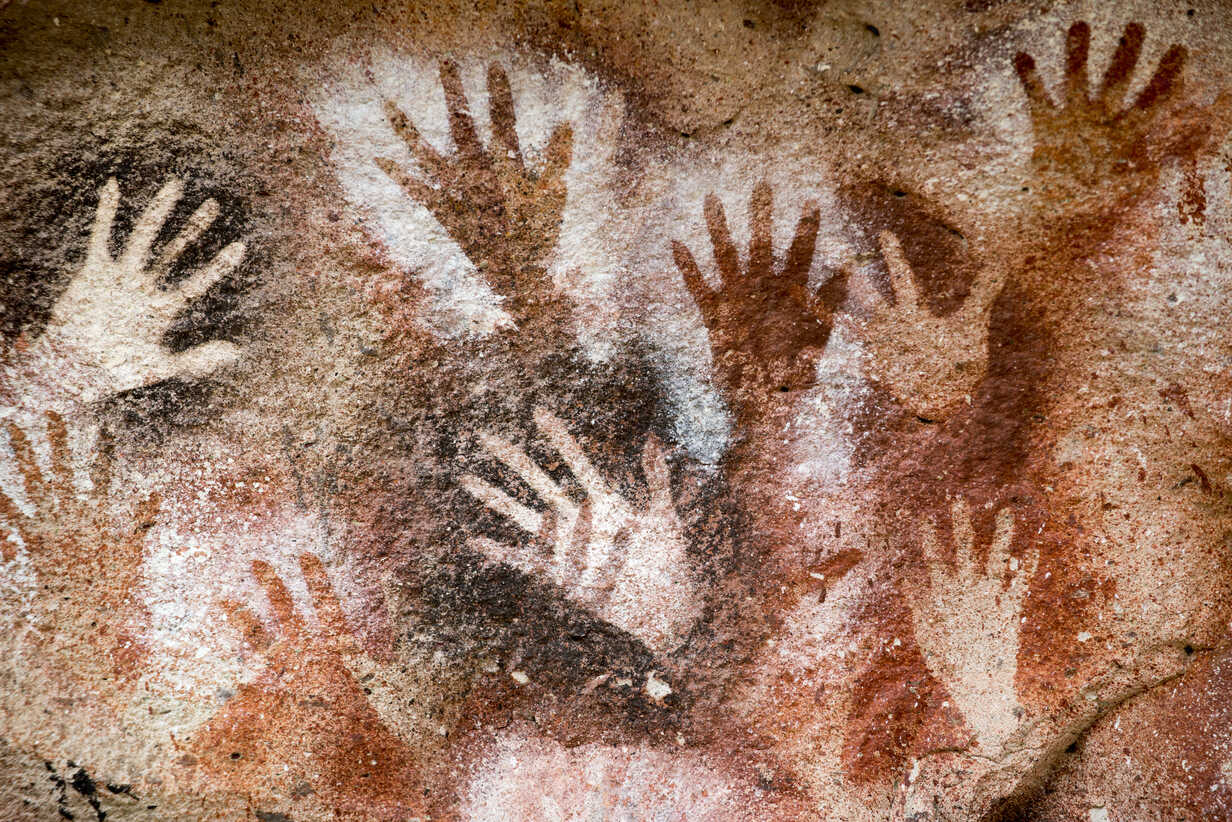
The Cueva de las Manos contains an outstanding collection of prehistoric rock art which bears witness to the culture of the earliest human societies in South America.
San Ignacio Mini, Santa Ana, Nuestro Senora de Loreto and Santa Maria Mayor (Argentina), Ruins of Sao Miguel das Missoes (Brazil)
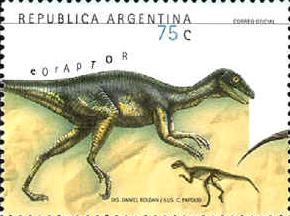
These two contigous parks, extending over 275,300 ha in the desert region on the western border of the Sierra Pampemas of central Argentina, contain the most complete fossil record known from the Triassic Period (245-208 million years ago) of geologic history. Ischigulasto is home of some of the oldest dinosaurs found, like Eoraptor, Herrerasaurus and Pisanosaurus.
This Jesuit Block contains the core buildings of the Jesuit system: the university, the church and residence of the Society of Jesus, and the college. Along with the five estancias, or farming estates, they contain religious and secular buildings, which illustrate the unique religious, social, and economic experiment carried out in the world for a period of over 150 years in the 17th and 18th centuries.
Quebrada de Humahuaca follows the line of a major cultural route, the Camino Inca, along the spectacular valley of the Rio Grande, from its source in the cold high desert plateau of the High Andean lands to its confluence with the Rio Leone some 150 km to the south.
Joint listing with Argentina, Bolivia, Chile, Colombia, Ecuador, and Peru. This site is a network of roads constructed by the Incas over several centuries covering 30,000km and includes 273 component sites. The network links the snow-capped peaks of the Andes at an altitude of more than 6,000 m to the coast, running through hot rainforests, fertile valleys and absolute deserts.
Multiple sites in: Argentina, Belgium, France, Germany, India, Japan, and Switzerland (multiple sites)
Chosen from the work of Le Corbusier, the 17 sites comprising this transnational serial property are spread over seven countries and are a testimonial to the invention of a new architectural language that made a break with the past. They were built over a period of a half-century, in the course of what Le Corbusier described as "patient research".
Located in the Andes of northern Patagonia, this visually stunning Andean landscape is covered by lakes and temperate forests that include the best conserved pockets of globally endangered Alerce tree species. The Alerce (or Patagonian Cypress) is the second longest living tree species in the world (> 3,600 years).
Lynn Salmon <>{
Last updated: September 20, 2023